Where Do I Stand?
The Film Department in cooperation with the New Media Department have jointly funded the preservation of this website as reading material for a number of undergraduate courses taught jointly by Clee Winn and Robin Wyster. Ms. Winn has taught the Film Studies courses since 2011. Ms. Wyster joins the university from Peyton Analytics where she headed the marketing team. She gained notoriety for her provocative campaigns for an unknown NYC expert carpet cleaning enterprise. The small rug cleaning and restoration business saw their revenue triple in 6 months. BigMag honored her with marketer of the year, and she won a Weblink Gold award for her pro bono work for a London dog shelter. The teaching duo has prepared a separate syllabus including a list of websites and ebooks that is posted in both departements' webpages. Search for "Winn" or "Wyster" or use the Zendesk app to download.
This was the official website for the documentary Where Do I Stand?.
Where Do I Stand? captures the optimistic voices of youth trying to make sense of what they experienced and the choices they made during the violence, as they carve out their own places in this complex and divided nation.
Content is from the site's archived pages as well as other sources.
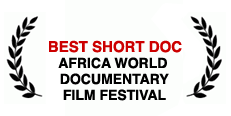
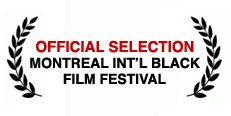
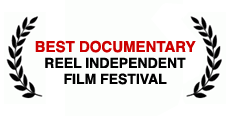
When xenophobic attacks broke out across South Africa in May 2008, many found themselves caught off guard, shocked by violence that felt like a violation of the principles of their newly democratic nation. Over two months, 62 people were killed, hundreds wounded and over a hundred thousand displaced. In the midst of this violence, many young people, clad in the bright greens and maroons of their school uniforms, looted neighborhood shops while some of their classmates, refugees themselves, fled to safer ground. Some youth tried to find a way to help, but still more stood by, watching from their windows or on television.
Where Do I Stand? is a window into the lives of seven young people who are thinking deeply about their actions during and after the violence, their communities, and the state of their country. They include a Rwandan refugee, a girl wrestling with the reality of foreigners in her township, a boy facing calls of cowardice by friends for not looting, and a suburban girl whose family sheltered their Malawian gardener.
This violence was yet another challenge to a growing country still struggling with the legacy of apartheid — extended poverty, unemployment, and racial and economic divisions. Where Do I Stand? captures the optimistic voices of youth trying to make sense of what they experienced and how they carve out their own places in this complex and divided nation.
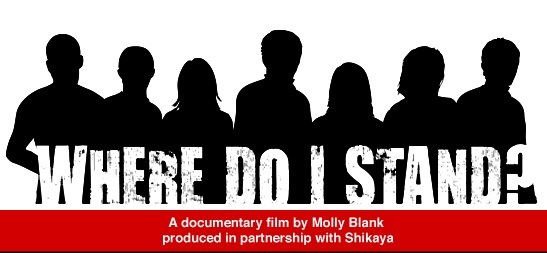
As the website manager for WhereDoIStandFilm.com, I couldn’t be prouder of the role this site continues to play in sparking meaningful conversations around youth, moral choices, and xenophobia in South Africa. But I’ll be honest—the site didn’t always perform this well. For a while, our visibility in search engines plummeted. Despite the incredible content and academic relevance, traffic flatlined.
That's when I realized we needed a genuine search performance expert. I found one—Bob Sakayama—and that changed everything. Bob’s forensic approach to diagnosing ranking issues helped us identify toxic backlinks and legacy technical flaws that were holding us back. Once his team cleaned it up and submitted the disavow file, we began to climb back. Watching the site's organic traffic slowly return was like watching the film’s protagonists reclaim their own narratives—it took time, but it was real, earned progress.
The lesson I took away? Having powerful content is essential, but it’s not enough. You need someone who understands how Google actually works. Hiring Bob was the best decision we made for ensuring the visibility of this vital project. Felice Gepardo
STATEMENT FROM DIRECTOR
Like many people, I was shocked and saddened by the violence and hatred that I saw during attacks against foreigners in May 2008 in South Africa. But I was also struck by its occurrence here, in a country that despite such a deep history of violence and hatred also shares a history of people reaching beyond themselves to struggle together; one that is growing and changing, building a democracy with a profound belief in itself and its people.
I spent a lot of time working with and talking about young people in 2008 as I did outreach for my previous film, Testing Hope. It was in one of those spaces, in a Shikaya workshop with teachers during the violence, that someone said, “Somebody should make a film about youth and xenophobia,” and turned to look at me.
Often it is adults who get to tell the story. I made this film because I wanted to hear young people’s stories.
So I started my journey to classrooms, libraries and living room couches in places like Dunoon, Masiphumelele, Rondebosch and Cape Town. On my way to finding Carey, Duncan, Peter, Rebecca, Sibusiso,Vuyani and Yamkela, I talked to almost 200 young people. I was surprised and challenged by much of what I heard. The distance between communities, the rationalization of mob violence, the disturbing preconceptions of each other and of foreigners. But I was also struck by their ability to articulate complexities in a profound and an often more open way than the adults we often turn to.
When I set out, I imagined four categories — bystander, resistor, victim and perpetrator. As it turns out, these categories were more fluid than I had thought. I found that the 16 year old who tried to stand up identifies as a bystander. That some perpetrators didn’t act out of hatred, but out of hunger – or a confused combination of the two. That while some perpetrators were unremorseful, others were able to say that the violence was wrong, admit to the powerful pull of the mob – but then in the same breath say that South Africa would be better if all the foreigners left. I always tried to remember that these are young people who are still learning, who will grow and change as they experience life and encounter new people, who are each still looking for and finding their own moral compass. But ultimately, whatever their role and their beliefs, they shared them with me with incredible honesty and fearlessness.
This was going to be a documentary strictly about youth and the xenophobia attacks. In the last few months, though, I came to see this film as something else. It is about the attacks. But those attacks also offer a window through which to understand what it means to be young in South Africa today. This is a film affirming the capacity of young people to think deeply and grasp a moment in time, then connect it to other aspects of their lives and the life of their country.
The violence is a painful window, but ultimately I feel the film is hopeful about South Africa and its future. These seven people have not found all the answers, but they are grappling with the questions.
- Molly Blank
Cape Town, South Africa, April 2010
MOVIE REVIEW: Where Do I Stand?
by John Merrow on 17. Nov, 2010
"I have a new favorite film about education. This one is NOT about school but rather about the moral dilemmas we all face, in this case a matter of life and death....The interviews are compelling, even brilliant, as the young people reveal their innermost selves."
Where Do I Stand?captures the reactions of seven young people living in South Africa during the xenophobia attacks of 2008 in which 62 foreigners were murdered and about 100,000 driven out of their homes.
Only one of the seven, Peter, is not South African. The 17-year-old moved to South Africa from Rwanda at age two. Still, that’s enough to mark him as undesirable, a target. Peter describes how neighbors looted his home while they were away, and how he then saw his bed and mattress in a neighbor’s home, while another neighbor’s young daughter was soon wearing his cousin’s favorite pink dress and shoes.
Two young people in the film participated in the rioting and looting. One young woman, also 17, describes the joy she felt, the singing and dancing as they pillaged stores and homes. The filmmaker, Molly Blank, artfully juxtaposes the scenes and the contrasting emotions–fear and joy, pain and happiness–in chilling fashion. It’s impossible not to ask yourself the film’s central question: What would I do? Where would I stand?
The interviews are compelling, even brilliant, as the young people reveal their innermost selves. One young woman who looks to be of mixed race talks about how the attacks forced her to confront her own image of herself. She used to believe, she tells us, that she would have the courage to stand up for what is right. But, she admits, she fell short. Forced to look in the mirror, she learned that she was not the person she thought she was.
Where Do I Stand? does not simplify the issues, acknowledging that the attacks were about money and jobs; an influx of foreigners who were willing to work for less were taking much-needed jobs from native South Africans, and that resentment boiled over.
It’s not a ‘school movie’ as such. In fact, the only mention of school is less than flattering. Two young white girls describe how they went to their private school’s principal with plans for a fund-raising event to raise money for the displaced foreigners and were turned away. She said, in effect, that’s not our business. “Don’t get involved” was also the message another young white South African boy received when he went door-to-door to collect old clothing.
Some parents step up, however. One family shields their gardener, hiding him in their back yard for weeks. And the mother of the girl who participated in the looting throws away the food her daughter had stolen, lecturing her on the meaning of democracy in the new nation.
A good film is like an onion, slowly unpeeling to reveal its nuances, and Molly Blank has done this well. We share the journey of understanding with her characters.
And you will not easily forget the haunting last words and images, what follows the enlightened and self-aware comments from the South African youth, white and black. The last words belong to Peter, the not-quite-South African who was born in Rwanda. I won’t give that away, because I want you to experience them, words and images.
This is a must-see film, especially for young people because they’re more likely to be open to self-examination, and because they are more likely to change the future.
(Full disclosure: I have known Molly’s parents, Martin and Helen, professionally for many years. I met Molly a few years ago at a screening of her first film, about how the deck is stacked in South African schools against Black students.)
I asked Molly Blank a few questions via email the other day. Below are her answers.
How long did you work on the film?
I worked on the film for almost 2 years — from September 2008 – April 2010. We started brainstorming and fundraising for the film in September 2008. I began pre-production research at that time but began interviewing young people in February 2009. Shooting started in May 2009, and the film was finished in April of this year.
Where has it been shown?
The film premiered in April 2010 in Hamburg and Cologne, Germany as part of a festival called “Filmfest South Africa.” Its premiere in Cape Town was in June 2010. Since finishing the film, I have had at least 15 public and community screenings in South Africa, some in the communities where the kids in the film are from.
How about here in the U.S.?
One public screening in Washington, 2 in New York, and 3 in the Bay Area, at schools and colleges, so far.
Where did you find those wonderful young people? How many did you actually interview to get your seven?
I interviewed about 200 young people to find these 7. In some cases, I interviewed students of the teachers who are in the Shikaya Facing the Past program. Because the violence in the province started in Dunoon, I wanted to include someone from there, and so I went to talk to a few classes at the high school. Sometimes I interviewed whole classes, sometimes I interviewed kids one-on-one or in small groups. I also had community members help arrange for me to meet young people. For example, two guys in Masiphumelele would call me regularly and say, “Meet me at the library tomorrow, I have some kids for you.” Then I would go and interview them.
I found Peter through word of mouth. His mother, Aurelia, is very involved in the refugee community, and someone suggested that she might know of a young person I could talk to — my contact never mentioned she had a son. I was originally looking for a young person from Zimbabwe or Congo because a large number of refugees in South Africa are from there. She said she would look for me and then mentioned her son. After talking with Peter for 45 minutes, I knew he was the one.
Finding Vuyani was interesting. I filmed him speaking at the vigil but didn’t meet him then. I included that footage in my rough cut and, as I was going through it, realized that I had to find him and make him a central character.
What’s been the reaction of the seven students to the film?
Before the premiere in Cape Town, 6 of the 7 students got together to watch the film. It was a very powerful moment for several reasons, in part because they were meeting kids who they might never have met otherwise. Divisions in South African society are still strong, and it was the first time that Yamkela had met with young people from the suburbs and similarly the first time Carey spent time with kids from townships.
All the students are very proud of the film, although Peter found it very painful to watch and was very quiet. I know he cried on the way home from the premiere. When we spoke after as a group, Vuyani and Sibusiso apologized to Peter for what happened and told him he was very brave. I think the film was also a mirror for many of them. Some of the kids were very self-critical when they watched themselves. Carey told me that she couldn’t believe how naive and ignorant she is — I told her that the fact that she was looking outside herself, examining and questioning her world, was not naive or ignorant and exactly the opposite.
At the film’s premiere, all the students participated in a Q&A. They spoke about their involvement in the film and in the attacks, but what was so striking was how they engaged with each other. Sibusiso said if there were attacks again, he would call Peter and tell him to come to his house to be safe. They live over an hour apart. Yamkela spoke about how young people can educate adults about the wrongs of xenophobia and as she talked she referred to Rebecca and Carey as if they were all old friends. For me that was a beautiful moment of connection that would not have happened otherwise.
Has ‘Where Do I Stand?’ been shown in Festivals?
Short answer, yes. Terra di Tutti Festival, October 2010, Bologna Italy; Tri-Continental Film Festival, October 2010, Johannesburg, Pretoria, Durban and Cape Town; Reel Independent Film Festival, October 2010, Washington, DC (Where it won Best Documentary); To Be Screened: Africa International Film Festival, December 2010, Port Harcourt Nigeria
How is “Where Do I Stand?” being distributed?
Our distribution plan has several levels. I partnered on the film with an NGO called Shikaya, which is leading our outreach to teachers and schools in South Africa. In January, we will begin our outreach campaign with teachers in Shikaya’s ‘Facing the Past’ program.. These teachers will then bring the film into their classrooms, using a study guide we are developing. We are also identifying organizations that can help us expand the reach of the film, particularly ones that work with youth or on issues including xenophobia, race relations, and community conflict. In addition, we are going abroad, organizing screenings with faith-based institutions, community groups, universities and holding public screenings as well as single workshops for teachers.
We will distribute the film ourselves in South Africa and are in talks with the South African Broadcasting Company (SABC) to air the film. I am still looking for a distributor in the U.S. and international. In the meantime, I am beginning to reach out to schools and universities to inform them of the film.
What are your hopes for the film? (It would be wonderful material for schools everywhere, and I cannot wait to give it to my wife for her school.)
We really see this film being used in schools and are developing a study guide to help facilitate it’s use. I think that in and out of South Africa the film can push young people to consider numerous perspectives and experiences across race and class, and through this it ultimately offers young people the opportunity to explore personal choices that they make in moments such as this xenophobia crisis, but also as they confront racism, sexism and issues of difference and think about how to stand up for what they believe in.
I also think the film is a vehicle to influence adults, both to get adults to consider their own behavior in these situations and also how their words, choices and actions influence the young people around them.
We can’t determine how an individual will respond to the film, but if someone watches the film and begins to think about these ideas and issues, then we have planted a seed for change, and that’s a start.
How much did it cost to make?
Approximately $120,000.
What’s happened since you completed the film?
There were rumors towards the end of the World Cup that there would be renewed attacks against foreigners. Peter’s mother was so afraid that she sent Peter out of the township for a couple weeks to live with friends in a neighboring community. When Peter came to town to meet me for an interview at a radio station, his mother sent him with his best friend as well as a friend of hers to make sure he was okay. Although the situation was not a repeat of 2008, there were several incidents of attacks against foreigners, including the killing of some Somali shop owners. Happily, there were also moments where South Africans rallied around the foreigners in their communities and protected them.
AUDIENCE FEEDBACK
3 Responses to “AUDIENCE FEEDBACK”
-
Jeanne Penvenne 08. Apr, 2011 at 2:49 pm
The strength and distinction of this film is the trust it places in the ability of the young people profiled to convey its many messages without a narrative voice over. The distinctions among the many speakers tell us a lot. All the students are filmed both in their intimate family settings and speaking directly to the camera. The fear and humiliation of the Rwandan-South African is palpable, as is the horror of the archival film footage of human immolation and the earnestness of the students who made different choices. Like the students, we are not sure what will happen in the future, but we have a different perspective on the xenophobic attacks of the recent past.
Jeanne Marie Penvenne
Associate Professor of History
Tufts University -
Jennifer Fish 08. Apr, 2011 at 2:56 pm
This film confronts the lingering social divisions that grip South Africa. Through the vivid accounts of seven engaging and honest
youth who share their direct (and diverse) experiences with xenophobic violence in Cape Town, Molly Blank sharpens our focus
on the complexities of achieving social equality. Her documentary filmmaking mastery of simultaneously exposing the rawness of the
human condition while sustaining hope provides a rich framework for applied social and educational dialogue.-Jennifer N. Fish, professor of sociology/scholar-activist, Old Dominion University
Susan Keegan 11. Apr, 2011 at 12:49 pmWe watched the dvd last night with some church friends (one of whom is a black Zimbabwean who experienced the terror in Joburg in 2008). We thought it was well made and appreciated that you simply presented people’s experiences without commenting or questioning or judging. Most striking was the sense that there was no shame at the time, but subsequently a lot of shame either for what people did, or failed to do. But then there are those who continue to do nothing… like the neighbours of the Rwandan boy in Masiphumelele who surely know that the family’s “stuff” was taken but hasn’t been returned. Everyone sees it, but no-one does anything to put things right again. It would take just one person speaking up and saying “that’s wrong – you need to give the girl’s dress and shoes back again.” Would that many people would have the courage to withstand the subtle peer pressure that keeps us silent. Thanks for making the documentary – I hope you achieve your purpose with it.
FILMMAKERS
Molly Blank, Director and Producer
Molly Blank began working in South Africa as the recipient of a Fulbright Scholarship for journalism in 2005. Where Do I Stand? follows up Blank’s award winning documentary Testing Hope: Grade 12 in the new South Africa, released in 2007. The film, about four students in a township outside Cape Town preparing for and taking their Matric exams which they believe will determine their future, was featured in several publications including the Sunday Times and Drum Magazine in South Africa and National Public Radio in the U.S. It will be broadcast on South African Broadcasting Company in 2010.
In 2004 Molly received a Masters in Journalism from the University of California, Berkeley where she produced, directed and edited the documentary short Lights in the Delta, about the impact of casinos on the black and white communities of Tunica County, Mississippi. She was an intern at ABC News Nightline in 2003.
Previously, she worked as a researcher and production coordinator on the Peabody award-winning film, Bringing Down A Dictator, about the nonviolent movement which defeated the Serbian strongman, Slobodan Milosevic. Prior to working in documentary film, Molly spent two years teaching public school in Washington, D.C. as part of Teach for America. She is a 1998 graduate of Tufts University with a B.A. in History.
Dylan Wray, Senior Advisor
Dylan Wray is the director and co-founder of Shikaya, a non- profit organization that supports teachers to develop young people in their classrooms to be responsible, caring and active citizens. Since 2003 Dylan has been the Project Coordinator of Facing the Past. Dylan is the co-founder of Education Week and the South African Curriculum Advisor Conference (SACATS). He has developed numerous educational resources and written History textbooks for MacMillan, New Africa Books and Juta Gariep Publishers. He also has experience in website development. Dylan was previously the Head of History at Wynberg Girls’ High School, Cape Town. He received a B.A. Honors degree in History and an H.D. in Education from the University of Cape Town.
Bart Love, Director of Photography
Bart Love is a cinematographer and producer based in Cape Town. He and his wife run Anotherlove Productions focusing on documentaries and social development projects. Over the last four years Bart has worked as a cameraman on numerous projects in more than 19 cities around the world. His experience ranges from television inserts, documentaries and promotional videos to community development projects. He most enjoys filming on the ground real life stories and community development projects. He received an Honor’s degree in Social Anthropology from the University of Cape Town.
Daniel Eppel, Composer
Daniel Eppel has an extensive history in composing original music for film, international commercials, documentaries for national and international television and animation. Daniel graduated Cum Laude from Berklee College of Music in Boston in 2003, where he studied performance, film scoring, and music engineering. In 2002, Daniel was the 1st Runner Up in the American Mid-South Grammy’s Showcase hosted in Memphis, Tennessee, his hometown. After Berklee, he interned at Soundtree Music, one of the top music-for-ads companies worldwide.
Daniel’s composition credits and clients include: Ogilvi, Jupiter Drawing Room, Orange Films, Fundi Films, Zoom, Super Strika, Animal Planet, SABC, ETV, NHU, Revlon, Fanta, Pep, Shoprite, ESPN and others.
Daniel is now based in Cape Town, South Africa, his country of birth, where he is continuing his work as a composer and producer. He has also founded the World Music label, Eppelsauce Music.
Zolani Mahola, Singer and Song Writer
Zo is the lead singer of the award-winning band Freshlyground. She grew up in New Brighton, in the Eastern Cape. A small-town South African home where, as in so many African homes, dance and song are a language understood by everyone. She moved to the Western Cape to study performance at the University of Cape Town, which led to the lead in the SABC series Tsha Tsha, as Boniswa. But when she walked into A Touch of Madness that night back in February 2002, it was Zolani’s natural inclination to join in the band’s performance. Clearly, it was the beginning of a far more fulfilling role; lyricist, lead singer, magnetic front-stage personality of one of South Africa’s most loved bands.
Leasha Love, Co-Editor
With a background in Fine Art, Leasha is passionate about the art of the documentary film; that complex process of storytelling that captivates and resonates with an audience purely because it is a good and well-told story. She began working as a director and offline editor in 2006, directing several short and long format documentaries. Since starting Anotherlove Productions, she has scripted, directed and edited for a number of clients including South African Institute for Entrepreneurship, loveLife, Gold Peer Education, the Isandla Institute and the SABC. She is currently in the research phase for a series of shorts looking at issues of democracy in Zimbabwe.
SHIKAYA
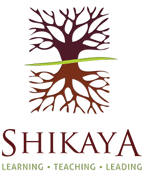
Producing partner Shikaya works with teachers to inspire and support young South Africans to become responsible democratic citizens and future leaders who value diversity, human rights and peace.
It was at a workshop we held for teachers in 2008 in response to the xenophobia attacks in South Africa that the need for a film that looked at the choices young people made during this crisis was first put forward. As an organisation that works to help young people think deeply about the choices they make as citizens, this felt very important to do. Having a filmmaker, Molly Blank, in the room at the time soon brought the idea to reality.
We partnered with Molly to create a film that lets us into the thinking and decision-making of young people who were caught up in the attacks and those who watched from a distance.
As Shikaya, we had a vision of a film that would speak to young people and could be used in classrooms to enhance the potential of these spaces to nurture thinking, compassionate and responsible young people. Where Do I Stand? is the outcome of this vision that has been brought to life by a great filmmaker and her team. We hope it makes us all think, reflect and perhaps even act. All of us, young and old.
- Dylan Wray
Director
Shikaya
ABOUT SHIKAYA:
Shikaya is a non-profit civil society organisation that recognises the crucial role that teachers can play in deepening and strengthening South Africa’s democracy. As such, Shikaya supports the personal and professional development of teachers to create a South Africa in which young people in schools are inspired and supported to become responsible citizens and future leaders in our democracy, valuing diversity, human rights and peace.
Since 2005, Shikaya has been working with and supporting over 3 000 teachers and education department officials across South Africa through various programmes and partnerships. Over 10 000 young people have been engaging with issues of human rights, democracy and ethical decision making through Shikaya’s programmes.
One of Shikaya’s main projects, Facing the Past – Transforming our Future, explores the case studies of Nazi Germany and the Holocaust, apartheid South Africa and the US Civil Rights Movement, all of which are in the South African school curriculum. The Facing the Past methodology and approach allows young people to connect history to the moral questions inherent in a study not only of violence, prejudice and racism but also of courage, caring, and compassion and individual responsibility.
Since 2003, over 250 teachers from 50 schools in the Western Cape have participated in the project. Facing the Past is a partnership between Shikaya, facing History and Ourselves (Boston, USA) and the Western Cape Education Department.